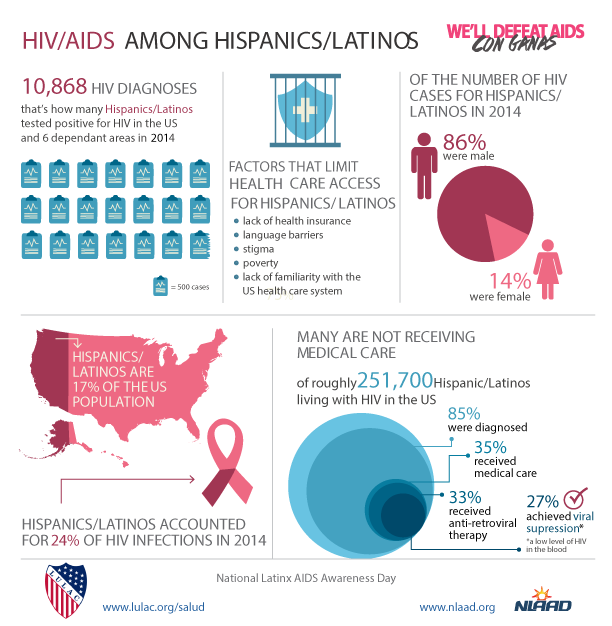HIV Among Latinos

Prevention challenges
A number of factors contribute to the HIV epidemic in Latino communities.
There is a greater number of people living with HIV (prevalence) in Latino communities, and due to Latinos largely having sex with partners of the same race, Latinos face a greater risk of HIV infection.
While data suggest that most Latino men with HIV were infected through sexual contact with other men, the behavioral risk factors for HIV infection differ by country of birth.
The majority of HIV infections diagnosed among Latino men and women are attributed to sexual contact with men. Being unaware of a partners’ risk factors may place Latino men and women at increased risk for HIV.
Research shows that the presence of a sexually transmitted disease (STD) makes it easier to become infected with HIV. Latinos have the third highest rates for STDs including chlamydia, gonorrhea, and syphilis.
Cultural factors may affect the risk of HIV infection. Some Latinos may avoid seeking testing, counseling, or treatment if infected because of immigration status, stigma, or fear of discrimination. Traditional gender roles, cultural norms, and the stigma around homosexuality may add to prevention challenges.
Socioeconomic factors such as poverty, migration patterns, lower educational accomplishment, inadequate or no health insurance, limited access to health care, and language barriers may contribute to HIV infection among Latinos. Those factors may limit awareness about HIV infection risks and opportunities for counseling, testing, and treatment.
Because of fear of disclosing immigration status and possible deportation, undocumented Latino immigrants may be less likely to access HIV prevention services, get an HIV test, or receive adequate treatment and care if they are living with HIV.
|






|